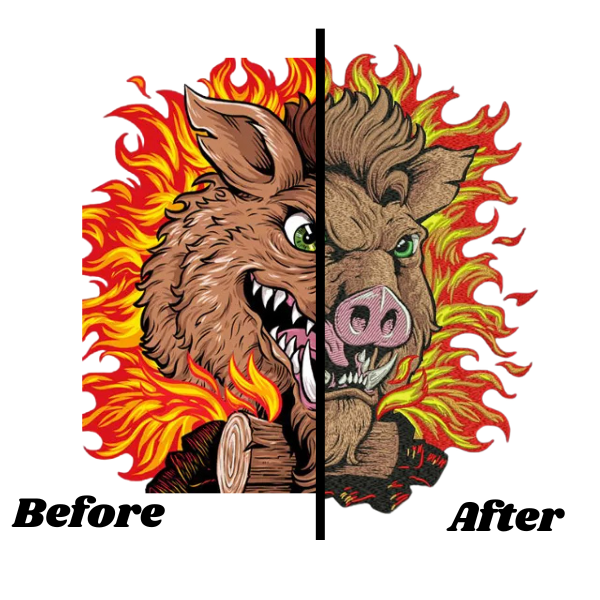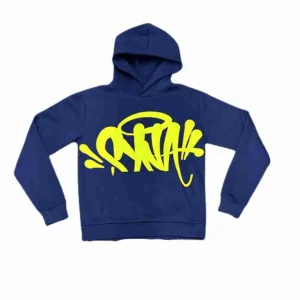
digitize embroidery
like ZDigitizing complement software by offering professional digitizing for those who prefer outsourcing. This comprehensive blog explores the best software to digitize embroidery designs in 2025, detailing features, pros, cons, and applications, with a focus on user-friendliness and functionality. A concise FAQ section at the end addresses common questions to guide your decision.
What is Embroidery Digitizing Software?
Embroidery digitizing software converts images (e.g., JPG, PNG, SVG) or original designs into machine-readable stitch files. It allows users to create, edit, and customize designs by specifying stitch types, colors, and densities. Software ranges from beginner-friendly tools for basic editing to advanced platforms for manual digitizing, catering to hobbyists, home businesses, and professionals. Key considerations include ease of use, compatibility with embroidery machines (e.g., Brother, Janome), and features like auto-digitizing, manual control, or font integration.
Key Factors for Choosing Digitizing Software
Before diving into the best options, consider these factors to match software to your needs:
-
Skill Level: Beginners need user-friendly interfaces, while professionals require advanced tools.
-
Purpose: Are you editing pre-made designs, creating from scratch, or running a business?
-
Budget: Free or affordable options suit hobbyists; premium software benefits commercial use.
-
Features: Look for auto-digitizing, manual digitizing, font support, and file format compatibility (e.g., DST, PES, JEF).
-
Support: Tutorials, community forums, and customer service are vital for learning and troubleshooting.
Top 5 Embroidery Digitizing Software in 2025
Here are the best software options for digitize embroidery designs, based on functionality, ease of use, and user feedback:
1. Hatch Embroidery by Wilcom
Overview: Hatch, powered by Wilcom, is a versatile, user-friendly software suite for hobbyists and professionals. It offers four levels (Organizer, Personalizer, Composer, Digitizer) to suit different needs, with robust tools for editing and creating designs.
Key Features:
-
Levels for All Users: Organizer ($149) for file management, Personalizer ($249) for lettering, Composer ($499) for layout creation, and Digitizer ($1,099) for full manual digitizing.
-
Auto-Digitizing: Converts simple images (e.g., JPG, SVG) into stitch files with minimal input.
-
Manual Digitizing: Offers precise control for complex designs, including 3D puff and appliqué.
-
Built-in Designs and Fonts: Includes over 1,000 pre-digitized designs and 60+ fonts.
-
Stitch Player: Simulates stitch-outs for previews.
-
Compatibility: Supports most machine formats (DST, PES, JEF) and works on Windows and Mac.
Pros:
-
Intuitive interface with extensive tutorials and a supportive community (30,000+ users on Facebook).
-
Free 30-day trial to test all levels.
-
Modular pricing allows you to buy only what you need.
Cons:
-
Higher cost for advanced levels (Digitizer at $1,099).
-
Steep learning curve for manual digitizing.
Best For: Beginners to professionals seeking a scalable, feature-rich solution.
2. Embrilliance Essentials and StitchArtist
Overview: Embrilliance is a beginner-friendly, modular software compatible with Mac and Windows, ideal for editing and basic digitizing. Its StitchArtist module supports advanced design creation.
Key Features:
-
Essentials ($149): Basic editing, lettering, and file conversion for formats like DST, PES, and BX fonts.
-
StitchArtist (Level 1: $169, Level 2: $389, Level 3: $649): Offers manual and auto-digitizing, with advanced tools like 3D puff and appliqué in higher levels.
-
Thumbnailer: Displays design previews in file explorers.
-
Knockdown Stitches: Prevents sinking on plush fabrics like towels.
-
Multi-Computer Licensing: Install on multiple devices without extra costs.
Pros:
-
Affordable modular pricing and excellent customer support.
-
Intuitive interface with BX font integration for easy lettering.
-
Active online community and tutorials.
Cons:
-
Limited advanced features in Essentials compared to premium software.
-
StitchArtist Level 3 is pricey for hobbyists.
Best For: Beginners and small businesses needing affordable, user-friendly digitizing.
3. Ink/Stitch
Overview: Ink/Stitch is a free, open-source extension for Inkscape, a vector graphics program, offering powerful digitizing tools for hobbyists and budget-conscious users.
Key Features:
-
Free and Open-Source: No cost, with community-driven updates.
-
Manual Digitizing: Supports precise stitch placement, satin stitches, and tartan patterns.
-
Lettering Tools: Includes pre-digitized fonts and keyboard-based text entry.
-
File Compatibility: Exports to DST, PES, JEF, and more.
-
Tutorials and Community: Extensive user manual and active forums for support.
Pros:
-
Completely free, ideal for beginners or hobbyists.
-
Versatile for advanced tasks like appliqué and free-standing lace.
-
Cross-platform (Windows, Mac, Linux).
Cons:
-
Steep learning curve due to Inkscape’s interface.
-
Lacks auto-digitizing for quick conversions.
-
Limited customer support compared to paid options.
Best For: Tech-savvy hobbyists or those exploring digitizing on a budget.
4. Embird
Overview: Embird is a versatile, affordable paid software with modules for editing, digitizing, and advanced techniques like photo-to-embroidery. It’s favored for its precision and customization options.
Key Features:
-
Manager and Editor Modules: Convert, organize, and edit designs with support for 70+ file formats.
-
Digitizer Module: Offers node-by-node manual digitizing and auto-digitizing for basic designs.
-
Sfumato Stitch: Converts photos into realistic embroidery designs.
-
3D Previews: Realistic stitch simulations for accuracy.
-
Pricing: Starts at $149 for basic modules, with add-ons for advanced features.
Pros:
-
Affordable compared to premium options like Wilcom.
-
Extensive manual digitizing tools for complex designs.
-
Large community and detailed tutorials.
Cons:
-
Dated interface may feel less intuitive.
-
Additional modules increase costs.
Best For: Intermediate users seeking affordable, precise digitizing.
5. Wilcom EmbroideryStudio
Overview: Wilcom EmbroideryStudio is the industry-standard software for professional digitizers, offering advanced tools for commercial-grade embroidery. It’s ideal for businesses but expensive for hobbyists.
Key Features:
-
Four Levels: Options for non-digitizing shops ($1,299) to full digitizing ($3,999).
-
Advanced Digitizing: Manual and auto-digitizing with tools for appliqué, 3D puff, and quilting.
-
EmbroideryConnect: Wireless design transfer to machines.
-
.EMB Format: Stores editable objects, stitches, and artwork in one file.
-
Add-Ons: Features like stipple fill, color blending, and photo stitch.
Pros:
-
Unmatched precision and compatibility with professional machines.
-
Comprehensive tools for complex, commercial designs.
-
Free 14-day trial and flexible payment plans.
Cons:
-
High cost ($1,299-$3,999) unsuitable for hobbyists.
-
Complex interface with a steep learning curve.
Best For: Professional embroiderers and businesses needing top-tier tools.
Honorable Mentions
-
SophieSew: Free software with basic digitizing and editing tools, including a 3D viewer. Ideal for beginners but lacks advanced features.
-
Brother PE-Design 11: Tailored for Brother machines, with strong auto-digitizing and editing tools. Best for Brother users but less versatile for other brands.
-
Janome Artistic Digitizer: Offers unique features like PaintStitch for photo-realistic designs and Redwork conversion. Mac and Windows compatible but pricey ($1,999).
Applications of Digitizing Software
These software options support a variety of projects:
-
Hobbyist Projects: Create custom designs for gifts, home decor, or apparel using Ink/Stitch or Embrilliance.
-
Small Businesses: Produce branded merchandise like caps or shirts with Hatch or Embird.
-
Professional Production: Design complex logos or patterns for retail or corporate clients with Wilcom EmbroideryStudio.
-
Specialty Techniques: Craft 3D puff, appliqué, or photo embroidery for unique products.
Overcoming Common Challenges
Digitizing software helps beginners and professionals avoid pitfalls:
-
Poor Stitch Quality: Use previews and test runs to refine stitch density and placement.
-
Machine Compatibility: Ensure software supports your machine’s file format (check manual).
-
Learning Curve: Leverage tutorials, free trials, and community forums to master software.
-
Cost Concerns: Start with free options like Ink/Stitch or affordable tools like Embrilliance before investing in premium software.
Tips for Beginners
-
Try Free Trials: Test Hatch (30 days) or Wilcom (14 days) to explore features without commitment.
-
Start Simple: Use auto-digitizing for basic designs and progress to manual digitizing as skills improve.
-
Join Communities: Engage with forums or Facebook groups (e.g., Hatch’s 30,000+ user group) for advice.
-
Outsource When Needed: Services like ZDigitizing offer professional files ($10-$20) for complex designs or time-sensitive projects.
Future Trends in Digitizing Software
Emerging technologies will enhance digitizing in 2025:
-
AI Improvements: Advanced auto-digitizing for complex images with less cleanup.
-
Augmented Reality (AR): Preview designs on virtual fabrics for precise placement.
-
Cloud Integration: Seamless design sharing and storage across devices.
Conclusion
Choosing the best software to digitize embroidery designs depends on your goals and experience. Hatch Embroidery is ideal for versatility and scalability, Embrilliance excels for beginners, Ink/Stitch is perfect for budget-conscious hobbyists, Embird offers affordable precision, and Wilcom EmbroideryStudio is the gold standard for professionals. By testing free trials, leveraging tutorials, and considering services like ZDigitizing for complex needs, you can achieve stunning embroidery results. As AI, AR, and cloud technologies evolve, digitizing software will continue to empower users to create beautiful, professional designs with ease.
FAQs About Embroidery Digitizing Software
What is embroidery digitizing software?
It converts images or designs into digital stitch files (e.g., DST, PES) for embroidery machines.
Which software is best for beginners?
Embrilliance Essentials and Ink/Stitch are user-friendly and affordable for novices.
Is free software good enough for digitizing?
Yes, Ink/Stitch and SophieSew handle basic digitizing, but premium options like Hatch offer better results.
How much does digitizing software cost?
Free (Ink/Stitch) to $149-$3,999 (Wilcom), depending on features and purpose.
Can I use software with any embroidery machine?
Most software supports common formats (DST, PES, JEF); check your machine’s manual.
What’s the difference between auto and manual digitizing?
Auto-digitizing quickly converts images but may need cleanup; manual digitizing offers precise control for complex designs.
Do I need software matching my machine’s brand?
No, most software exports to multiple formats, but check compatibility.
How do I learn to use digitizing software?
Use tutorials, free trials, and community forums; services like ZDigitizing offer support for outsourcing.
What projects can I create with digitizing software?
Custom apparel, branded merchandise, home decor, and specialty designs like 3D puff.
What’s the future of digitizing software?
AI, AR, and cloud integration will simplify workflows and enhance design previews.




